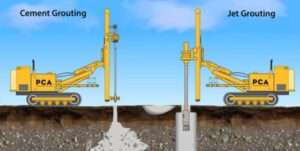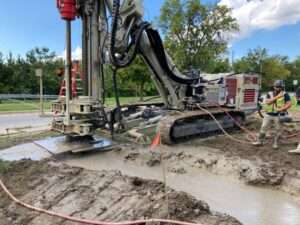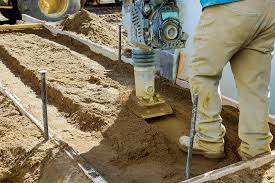Ground improvement techniques play a pivotal role in civil engineering, enabling construction on soils with inadequate strength or stability. These methods enhance the engineering properties of soil, ensuring structures built atop are durable, safe, and long-lasting. Among the plethora of ground improvement methods, Tam Grouting and Permeation Grouting are widely used due to their effectiveness and adaptability. Below, we explore these methods and others to understand their applications and advantages.
1. Tam Grouting
Tam grouting, also known as Tube-a-Manchette grouting, involves injecting grout through a pre-installed sleeve pipe into the soil. This technique targets specific zones, offering precision in improving the ground.
Key Features:
- Selective Treatment: Grout can be directed to problematic areas without affecting the surrounding soil.
- Applications: Ideal for stabilizing weak zones under structures, filling voids, or reducing permeability.
Materials Used:
- Cement-based slurries
- Chemical grouts, depending on the soil type and project requirements.
2. Permeation Grouting
Permeation grouting is a non-disruptive method where low-viscosity grout is injected into soil voids without disturbing its structure.
Key Features:
- Low Impact: Preserves the soil’s natural stratification while improving strength and reducing permeability.
- Applications: Commonly used for sealing groundwater leaks, underpinning structures, and strengthening sands and gravels.
Materials Used:
- Sodium silicate or microfine cement for sandy soils.
- Acrylic resins for highly permeable soils.
3. Jet Grouting
Jet grouting is an advanced method where high-pressure jets of water, air, and grout break and mix the soil in place, forming a soil-grout composite.
Key Features:
- Versatility: Effective in various soil types, including cohesive soils.
- Applications: Retaining wall construction, seepage control, and foundation improvement.
4. Vibroflotation
This method improves loose granular soils using a vibrating probe that densifies soil through rearrangement.
Key Features:
- Cost-Effective: Suitable for large-scale projects.
- Applications: Foundation preparation for high-rise buildings, bridges, and industrial facilities.
5. Soil Mixing
Soil mixing involves blending soil with stabilizing agents like cement or lime to create a stronger, more stable material.
Key Features:
- Customizable: Can be tailored to achieve desired strength and permeability.
- Applications: Slurry walls, excavation support, and embankment stabilization.
Advantages of Ground Improvement
- Enhanced Load-Bearing Capacity: Ensures safety and performance of structures.
- Reduced Settlement: Minimizes differential settlement in buildings and pavements.
- Cost Savings: Eliminates the need for deep foundations in many cases.
- Environmental Protection: Prevents soil erosion and reduces groundwater seepage.
Conclusion
Ground improvement methods like Tam Grouting, Permeation Grouting, and others have revolutionized construction in challenging soil conditions. By selecting the appropriate technique based on site conditions, engineers can create safer, more reliable foundations for infrastructure. As technology advances, these methods continue to evolve, offering even greater efficiency and precision in ground stabilization.







